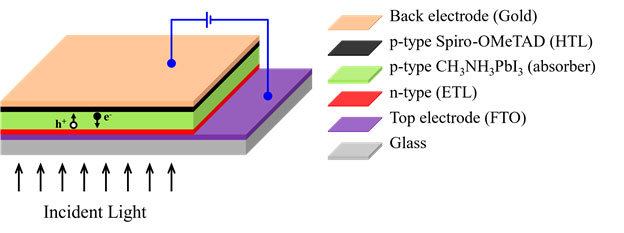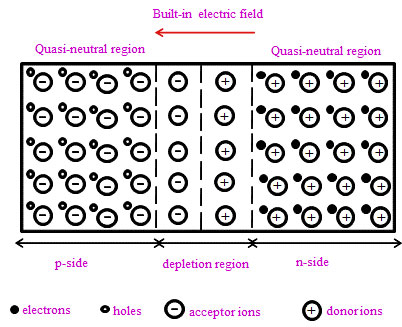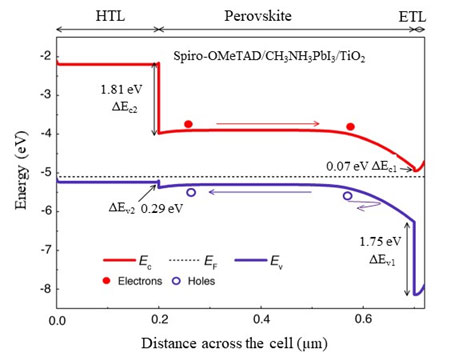
Perovskite based heterojunction solar cells gained enormous attention since their stabilized efficiency is comparable to that of single crystalline silicon (c-Si) solar cells. In the device, perovskite layer is an active light absorbing layer where electron-hole pairs are mainly generated.
Perovskite is sandwiched between electron transport layer (ETL) and hole transport layer (HTL). A planar n+-p-p+ structure consists of Glass/FTO/ETL/Perovskite/HTL/Metal. Perovskite is ambipolar in nature, i.e., it can transport electrons and holes to ETL and HTL respectively.


Performance evaluation and optimization of CH3NH3PbBr3 based planar perovskite solar cells using various hole-transport layers
Solar Energy 236 (2022) 832 – 840.
Methylammonium lead bromide based planar perovskite solar cells using various electron transport layers
Solar Energy 221 (2021) 456 – 467.
Influence of Electron Transport Layer (TiO2) Thickness and Its Doping Density on the Performance of CH3NH3PbI3-Based Planar Perovskite Solar Cells
Journal of Electronic Materials 49 (2020) 3533 – 3539.
Effect of absorber layer, hole transport layer thicknesses, and its doping density on the performance of perovskite solar cells by device simulation
Solar Energy 196 (2020) 177 – 182.
Interface studies by simulation on methylammonium lead iodide based planar perovskite solar cells for high efficiency
Solar Energy 190 (2019) 104 – 111.
At GVN SolarPower, for energy applications, we are dedicated to developing efficient and affordable solar cell technologies through research and development.
132 92 Ave, Skye Pl.
Surrey V3V 6T6
Vancouver BC, Canada
+1 604 203 2409
jkr@gvnsolarpower.com
careers@gvnsolarpower.com
While contacting us by email, please send a Cc to gvnsolarpower@gmail.com
Copyrights © 2023 GVN SolarPower Inc. Developed & Hosted by YOGA’S IT Solutions.